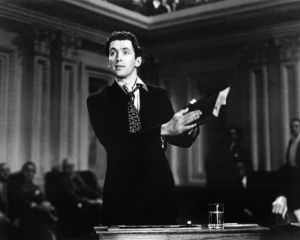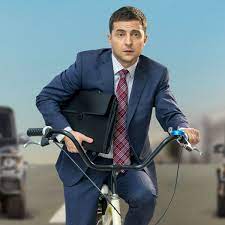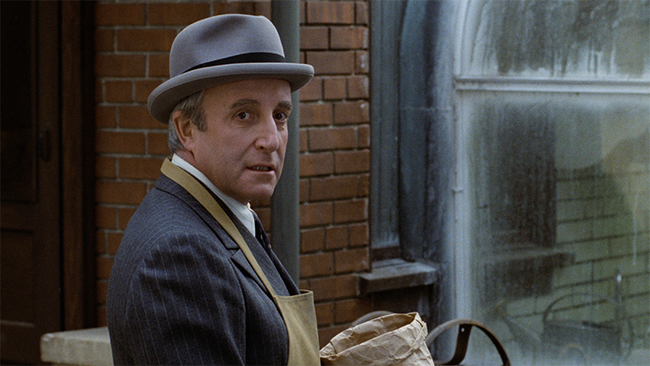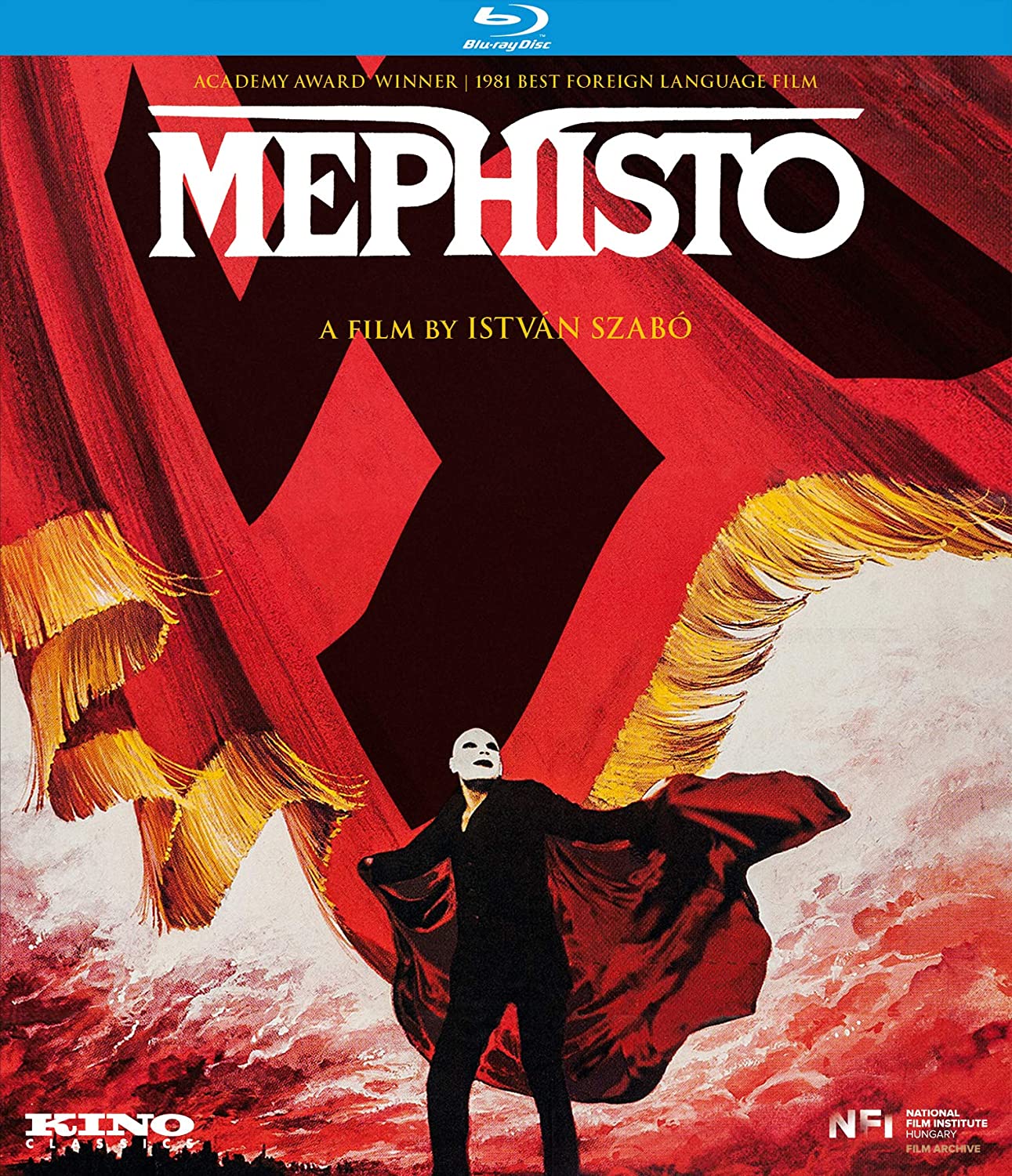
Mr. Zelensky Goes To Washington
Mr. Zelensky Goes To Washington
Vladimir Zelensky has been called many things, depending on which side of the now firmer divide, with the U.S. attempting to recreate the old Iron Curtain, an observer falls. To some he is a hero, valiant defender of a small nation against a mighty one, David to Putin’s Goliath, or a saviour, turning back an invasion by sheer willpower. To others he is a stooge, playing at diplomacy while not actually knowing what he is doing or, worse yet, a puppet, with the U.S., NATO and Ukrainian oligarchs pulling his strings. But, perhaps the more accurate characterization of Zelensky is to take seriously what he is in actuality, an actor, one who has been called upon to play at least four roles.
Servant of the People
Zelensky’s series, Servant of the People, now a global sensation running on Netflix and Arte in France, ran for three seasons, 51 episodes. It catapulted an Alberto Sordi-type everyman into the Ukrainian presidency, based on a diatribe against corruption that one of the students in his high-school history class recorded and posted and then went viral.

The show, which premiered in 2015, is a populist fable about how Vasily Petrovich Holoborodko, in his 30s, divorced and living with his parents, boasts that the country would change if he could just rule it for one week and then gets his wish. The villains on the show are Kiev oligarchs, shown in the opening from the back or in close-up with just their deceiving lips moving as high above the city they boast about the mockery of elections where each controls a different candidate supposedly opposing each other.
Holoborodko unifies the country, claiming that a small portion in the extreme East “The Separatists” and the West “The Nationalists,” both supported by the oligarchs, divide the nation by “country, language and birth.” Instead, Holoborodko preaches unity since “we are all human beings,” illustrated in the last episode by Ukrainian Russians from the “Far East” with their technical expertise assisting in saving miners trapped in the “Far West”. This recalls Georg Pabst’s Weimer film Kameradshaft (Comradeship) with its German and French working class coming together to heal the wounds of the trenches where they were exiled by their oligarchs. The show is a sort of Welcome Back Kotter meets House of Cards where the innocence of the high school teacher in the first rubs up against the cynical power structure of the second.
One of the show’s funnier sequences has two parliamentarians having sex in an antechamber in one scene and in the next violently opposing each other on the legislative floor. The fake antipathy recalls the Clinton era marriage of Democratic consultant James Carville and Republican and George Bush consultant and Clinton opponent Mary Matlin whose tryst, instead of suggesting complicity by the nation’s rulers in a faux two-party system, as People suggests, instead was marvelled at by the media as a model of “civility.”
Another sequence has a temporary female president supposedly worried about the country but with her anxiety then revealed to be instead about the outfit she is wearing, a page torn from the narcissistic would-be president in Veep. There is a kind of zaniness to this political satire, most evident in the unrelenting music, mocking the always-on-the-go advisors putting a president through his vacuous paces. The show’s dourness contains more than a dollop of Russian fatalist humor and the series was very popular in Russia.
Servant of the People – The Reality Series
Scarcely had the show finished its run in 2019, when Holoborodko/Zelensky was himself elected president, running on a platform copied right from his character on the show, promising peace, prosperity, and unity while portraying himself as a kind of homespun man of the people, ala Jimmy Stewart in Mr. Smith Goes to Washington, who would wage war against political corruption. He would also be a healer, a Jewish Russian speaker from the East who promised to “reboot” failed peace talks with the breakaway provinces of Luhansk and Donetsk and negotiate a “ceasefire” to end a war that had been destroying the country since 2014. Ukrainians, whose level of distrust of their government had reached a world low of 9 percent by the time of that election, ushered Zelensky/Holoborodko into office in a second-round landslide where he beat the standing president Petro Poroshenko, regarded by electors as a part of the oligarchy, by 73 to 24 percent.
Servant of the Oligarchs
Unfortunately, once in office, he himself behaved more like Kevin Spacey’s Machiavellian manipulator in House of Cards then Gabe Kaplan’s affable instructor in Welcome Back Kotter. His clean-up of corruption turned out to be primarily to make Ukraine safe for foreign capital, and so he set about attempting to please Western financial institutions above all else. His neoliberal reforms were in fact even too fast for, as he put it, “The Europeans, the IMF, the EBRD (European Bank for Reconstruction and Development) and The World Bank, which were “very happy,” but, he reported, urged him to “slow down a little.”
A key demand of these institutions was “land reforms,” that is a privatizing and monopolizing of lands long held in common since the Soviet period, and the subject of Ukrainian filmmaker Alexander Dovzhenko’s 1930 film Earth, as well as deregulation of the banking system. The land reform measure was widely opposed with 72 percent against this attempt to accustom the country to, in Zelensky’s words, “the normality of capitalism.” These neoliberal reforms, which Zelensky happily championed, led to industrial decline, salaries in arrears, rising unemployment and—and this is before the war with Russia—massive labor migration and depopulation, with experts predicting the country would lose one-fifth of its population by 2050, to the point where, by the time of the Russian invasion, Ukraine was the second poorest country in Europe, behind only its neighbour Moldavia.

On top of this, there was a paucity of cases instituted to further Zelensky’s nominal mandate, to clean up corruption. A promised corruption task force, the Bureau for Economic Security, still not fully operational almost 3 years after the election. Finally, tensions in Ukraine did not decline but increased as the war in the Donbass dragged on with 14,000 citizens of the two now-breakaway republics killed before the Russian invasion as “unity” broke down with Zelensky, the great unifier, refusing to contest a law that mandated Ukrainian state workers only to speak Ukrainian, though 40 percent of the country speaks Russian. A few months after entering office he had an approval rating of 57%, but by August 2021, that number had dropped to 29, with 69 percent believing the county was going in the wrong direction. Perhaps Zelensky as this point was simply channeling the Peter Sellers character in Being There, Chance the gardener who as unassuming advisor to the White House is inflated to become Chauncey Gardiner.
A more sinister interpretation though accompanied this drop in popularity, as it was revealed that the owner of 1+1 Media the popular television channel that aired Servant, Igor Kolomoyskyi, lent his personal lawyer to Zelensky to be campaign advisor and contributed to and promoted his candidacy on 1+1 and various other media outlets he owned. Once in office, Zelensky removed the oligarch’s opponents, the Prosecutor General, the Governor of the National Bank of Ukraine and his own prime minister who tried to regulate the media oligarch’s control of a state-owned electricity company. At that point Zelensky appeared more like the oligarchs in the opening scene of Servant than the crusading teacher who had only the people’s interests in mind. All this suggests that the serendipity of Servant may instead have been a carefully calculated campaign hatched not in 2019 at the time of the election but in 2015, as the show debuted to widely popular audiences.
Servant of the Empire
Zelensky’s world popularity, after reaching its absolute nadir in his own country, echoes that of George W. Bush in his before and after 9/11 transformation from academic ne’er do well to wartime leader. Perhaps the last role though is more ominous. With his popularity declining, Zelensky moved to institute more strict controls on freedom in the country. He has sanctioned political rivals and silenced television channels controlled by them, going so far in 2021 as to suggest that those in the Donbass sympathetic to Russia “immigrate there.” His party has also moved to pass a regressive labour law, curtailing rights on working hours and working conditions, as well as making it easier to dismiss workers without compensation, while even going so far as to cancel the rights of women to not be compelled to do strenuous labor. A previous iteration of the bill by the way was supported by the British Foreign Office, no stranger to neoliberal “reforms.” It should be noted that almost the first act of the Nazi regime in Germany was to outlaw labour unions, and this bill is certainly trending in that direction.
In addition, just before the war, France and Germany attempted to revive the Minsk accords, which would have allowed a ceasefire, and Zelensky refused to agree to restart the talks.
Zelensky then embarked on his world tour, this time as a kind of Zelig, Woody Allen’s chameleon who simply assumes the personality of whatever foreign leader he is near. Zelensky has become all things to all people, but especially serving those in the West who want to keep the war going in perpetuity, seeing a chance to achieve a 20-year U.S. goal of effecting regime change in Russia, no matter the cost.
Thus, in the UK his “We will fight on the shores” echoed Churchill’s World War II challenge to the nation in his “We shall fight on the beaches” speech. In Germany, he raised the spectre of the Cold War division of the country, urging the chancellor to tear down the new wall being constructed in Europe by the Russians between “freedom and bondage.”
In the U.S. he urged congress to “Remember Pearl Harbour when your skies were black with people attacking you,” and then called for a no-fly zone which would almost certainly expand the war and potentially lead to nuclear destruction which would “blacken the skies” in the most dangerous way. Those who think the war was engineered by the U.S. as a trap for Russia might also recall John Toland’s Infamy where he attempts to prove that Pearl Harbour was deliberately manufactured by U.S. policymakers as a way to move the U.S. population to accepting entry into the global conflagration of World War II.
Finally, in Israel, he invoked the Holocaust claiming, “Ukraine made the choice to save Jews 80 years ago,” but there he was quickly rebuked with a charge that parts of the Ukraine had participated in the mass extermination of Jews.

Which brings us to Zelensky’s last role, one where he moves from man of the people to perhaps now serving not only the U.S. empire but also, as aider and abettor of the Nazi Azov Brigade as it prepares for a last defence of Mariupol and of “Nationalist” parties such as The Right Sector, with that nomenclature often being a rebranding for a neo-Nazi formation aligned with the military. This new role is more akin to that of the actor in the 1980s film set in Nazi Germany who serves as a front for the government until he loses his effectiveness and is cast aside. Holoborodko, the Servant of the People, may be completing a long, arduous transformation into Mephisto.
